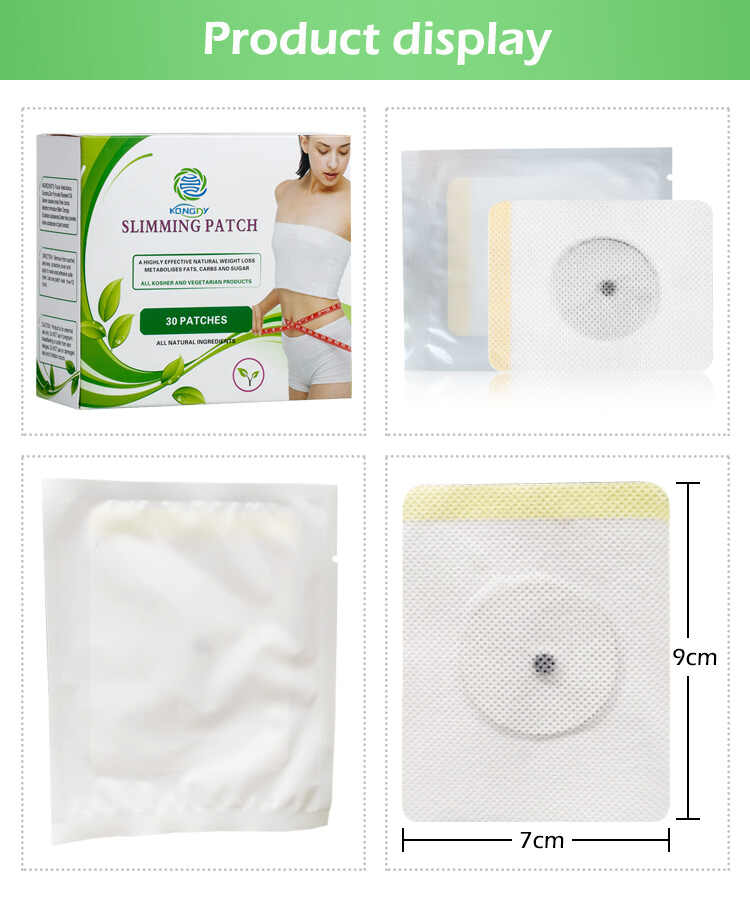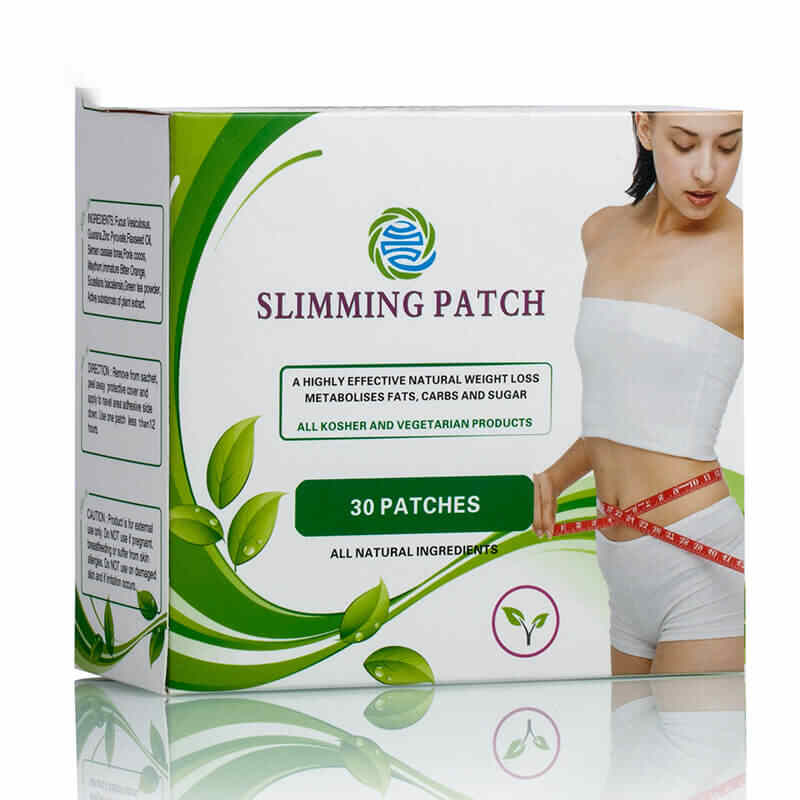Why is Quality Control Important in Transdermal Slimming Patches OEM?
In the global wellness industry, transdermal slimming patches are becoming increasingly popular as a convenient, non-invasive solution for weight management. With growing demand, businesses are turning to transdermal slimming patches OEM partners to develop innovative, effective, and safe products. However, one critical element that determines the success of these products is quality control.
Without strict quality control, even the best formulations can fail to meet safety standards, lose consumer trust, or face regulatory rejection. In this article, we will explore why quality control is vital for transdermal slimming patches Manufacturers, how it impacts Custom and Private Label transdermal slimming patches, and what businesses should look for in a reliable transdermal slimming patches Supplier.

1. The Role of Quality Control in OEM Manufacturing
Quality control (QC) in transdermal slimming patches OEM ensures that each patch produced is consistent, safe, and effective. It involves monitoring every stage of production, from sourcing raw ingredients to packaging finished products.
For a transdermal slimming patches Manufacturer, quality control helps to:
Guarantee compliance with international regulations.
Ensure product safety and minimize health risks.
Maintain consistent performance across all batches.
Strengthen brand reputation and customer loyalty.
Simply put, quality control is not optional—it is the foundation of success in the slimming patch industry.
2. Ensuring Safety and Consumer Trust
Consumers wear slimming patches directly on their skin, which makes safety a top priority. Without stringent QC, there is a higher risk of:
Skin irritation or allergic reactions.
Inconsistent dosage of active ingredients.
Premature detachment or poor adhesion.
A transdermal slimming patches Supplier that prioritizes quality testing prevents such risks and ensures that consumers can trust the product. Trust, in turn, translates into repeat purchases and positive word-of-mouth marketing.
3. Compliance with International Standards
Different regions have strict health and safety regulations. For example:
The FDA regulates dietary supplements and skin-contact products in the U.S.
The European Union requires CE marking and compliance with cosmetic safety standards.
Many countries require GMP (Good Manufacturing Practices) certification.
A professional transdermal slimming patches Manufacturer with robust quality control ensures all Custom transdermal slimming patches and Private Label transdermal slimming patches meet these standards. This compliance not only avoids legal complications but also accelerates entry into new markets.
4. Consistency Across Large-Scale Production
When scaling production for international orders, consistency is essential. Quality control guarantees that every patch delivers the same results, regardless of batch size.
A strong transdermal slimming patches OEM partner will:
Conduct batch testing for ingredient uniformity.
Verify adhesive strength and durability.
Ensure proper packaging and labeling.
Consistency builds consumer confidence and strengthens a brand’s reputation in competitive global markets.
5. Protecting Brand Reputation with Private Label Patches
For businesses launching Private Label transdermal slimming patches, reputation is everything. A single quality issue can damage years of brand-building efforts. Quality control ensures that:
Products are reliable and effective.
Packaging is accurate and professional.
Branding aligns with consumer expectations.
A transdermal slimming patches Supplier with strong QC systems enables private label brands to stand out and gain credibility in international markets.
6. The Cost-Saving Benefits of Quality Control
While quality control requires investment, it ultimately reduces costs by:
Preventing product recalls.
Reducing waste from defective batches.
Minimizing regulatory fines.
Ensuring long product shelf life.
For companies working with a transdermal slimming patches Manufacturer, strong QC translates into higher profitability and lower risk over the long term.
7. Customization Backed by Quality Standards
When creating Custom transdermal slimming patches, businesses often request unique formulations, packaging, or designs. Quality control ensures these customized products maintain the same safety and performance standards as standard offerings.
For example, QC verifies that:
Herbal extracts in Custom patches are pure and effective.
Eco-friendly materials in packaging meet durability standards.
Region-specific formulations comply with local regulations.
This balance between customization and compliance is only possible with a strong quality assurance system in place.
8. Key Elements of Effective Quality Control
A reputable transdermal slimming patches OEM Supplier follows a structured quality control process that includes:
Raw material inspection – Verifying purity and authenticity of active ingredients.
Production monitoring – Ensuring strict hygiene and GMP compliance.
Patch performance testing – Checking adhesion, absorption, and stability.
Microbial testing – Preventing contamination.
Packaging and labeling verification – Ensuring accuracy and compliance.
These elements create a robust framework that protects both brands and consumers.
9. How Quality Control Builds Long-Term Partnerships
Businesses prefer to work with transdermal slimming patches Suppliers that consistently deliver safe, effective, and compliant products. Strong quality control fosters:
Trust between manufacturers and brand owners.
Long-term OEM partnerships.
Higher chances of successful global expansion.
Ultimately, QC is not just about preventing mistakes—it’s about building a foundation for sustainable business growth.
10. Future Outlook: Increasing QC Demands
As consumer awareness grows, demand for safe and transparent wellness products will only increase. Future QC trends in the transdermal slimming patches OEM sector may include:
Blockchain-based traceability for ingredients.
Eco-friendly quality standards for sustainable patches.
AI-driven monitoring systems for production.
Brands that partner with forward-thinking transdermal slimming patches Manufacturers will be better positioned to meet these future expectations.
Conclusion
Quality control is not just an operational step—it is the cornerstone of success in transdermal slimming patches OEM manufacturing. It safeguards consumer health, ensures compliance with international regulations, and protects brand reputation.
Whether you’re investing in Custom transdermal slimming patches or launching Private Label transdermal slimming patches, choosing a transdermal slimming patches Manufacturer or Supplier with robust QC systems is essential. In a competitive global market, quality is the defining factor that separates successful brands from the rest.
Related Questions and Answers
Q1: Why is quality control critical for Custom transdermal slimming patches?
A1: QC ensures unique formulations are both safe and effective, maintaining consistent results for consumers.
Q2: How does quality control benefit Private Label transdermal slimming patches brands?
A2: It protects brand reputation by ensuring all products meet safety, performance, and regulatory standards.
Q3: What certifications indicate strong quality control in a Manufacturer?
A3: GMP, ISO, FDA, and CE certifications are key indicators of robust QC systems.
Q4: How does a transdermal slimming patches Supplier test product consistency?
A4: By conducting batch testing, stability testing, and adhesive performance checks.
Q5: What are the risks of working with a supplier lacking strong quality control?
A5: Risks include regulatory penalties, product recalls, consumer dissatisfaction, and brand damage.






